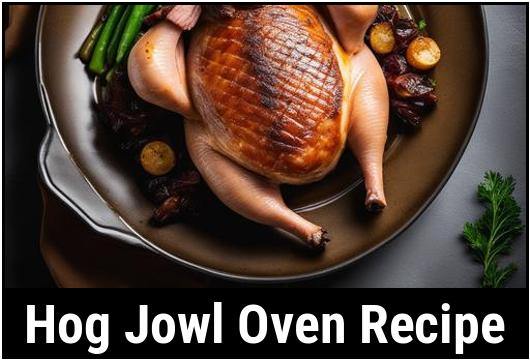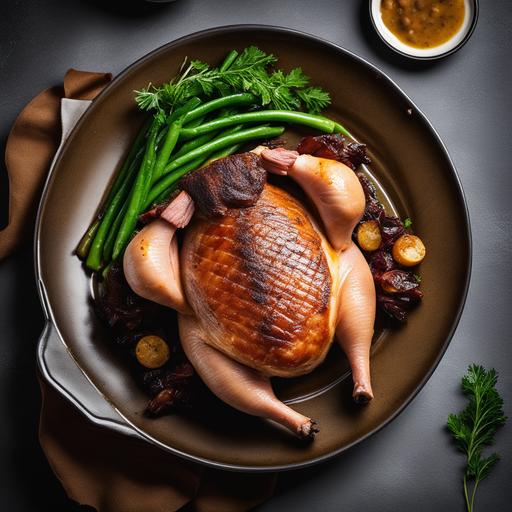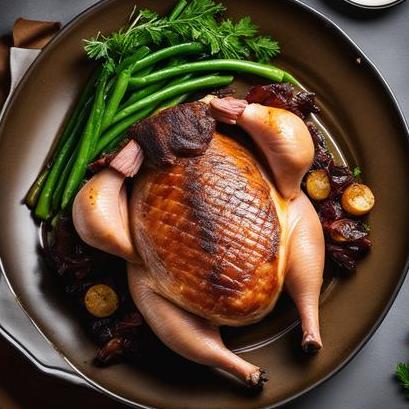
Hog Jowl Oven Recipe: A Delicious And Flavorful Delight
If you’re looking to try something unique and bursting with flavor, hog jowl is the perfect choice. This succulent cut of pork from the jowl region of a hog offers a rich and smoky taste that will leave your taste buds dancing. In this comprehensive guide, we will delve into the world of hog jowl, exploring its food science, culinary details, selection, cleaning, preparation, tips, variations, doneness checks, recipes, and even the pitfalls of overcooking or undercooking. So, grab a seat and let’s dive in!
Understanding the Food Science Behind Hog Jowl
Before we delve into the culinary aspects, it’s important to understand the food science behind hog jowl. Hog jowl, also known as pork jowl or guanciale, is the cheek region of the hog. This cut of meat consists of a generous amount of fat, which contributes to its unmatched flavor and tenderness. The marbling in hog jowl gives it a rich, smoky taste, making it the perfect ingredient for various dishes.
Culinary Details and Selection
When it comes to selecting the perfect hog jowl for your recipe, there are a few things to consider. Look for jowls that have a good balance of fat and lean meat. The fat should be firm and creamy white, while the meat should have a rosy pink color. Avoid jowls with excessive blemishes or a strong odor, as this may indicate spoilage.
Cleaning and Preparation

Cleaning hog jowl is a simple process. Start by rinsing the jowl under cold water to remove any loose debris. Pat it dry with a paper towel and proceed with your desired preparation method. Some recipes may require you to remove the skin, while others may leave it on for added flavor and texture. If removing the skin, use a sharp knife to carefully slice it off, ensuring not to remove too much fat, as it contributes to the overall taste.
Tips for Cooking Hog Jowl
Cooking hog jowl can be a delightful experience if you keep a few tips in mind. Here are some valuable pointers for achieving the best results:
-
Seasoning: Hog jowl pairs well with a variety of flavors, such as black pepper, garlic, and paprika. Experiment with different seasonings to find your preferred taste.
-
Marination: Consider marinating the hog jowl beforehand to infuse it with additional flavors. Common marinade ingredients include soy sauce, Worcestershire sauce, and honey.
-
Slow Cooking: The fat content in hog jowl makes it ideal for slow cooking methods. Consider roasting, braising, or smoking the jowl to achieve a tender, melt-in-your-mouth texture.
-
Slicing Thickness: Pay attention to the thickness of your slices when preparing hog jowl. Thin slices are perfect for frying or sautéing, while thicker slices work well for roasting or braising.
Delicious Variations of Hog Jowl Recipes

Now that you’re well-versed in the art of cooking hog jowl let’s explore some popular and mouth-watering recipes:
1. Crispy Pan-Fried Hog Jowl
For a quick and easy snack or addition to your breakfast, try pan-frying hog jowl slices to a crisp perfection. Here’s a simple recipe to guide you:
Ingredients:
-
Thinly sliced hog jowl
-
Salt and pepper for seasoning
Instructions:
-
Heat a skillet over medium heat and add the hog jowl slices.
-
Cook for 2-3 minutes on each side until golden brown and crispy.
-
Remove from heat and place on a paper towel-lined plate to absorb any excess oil.
-
Season with salt and pepper to taste.
-
Serve hot and enjoy!
2. Slow-Roasted Hog Jowl with Maple Glaze
For a delectable main course, try slow-roasting hog jowl with a sweet and savory maple glaze. Here’s how to create this irresistible dish:
Ingredients:
-
1 whole hog jowl
-
1 cup maple syrup
-
¼ cup Dijon mustard
-
2 cloves garlic, minced
-
Salt and pepper to taste
Instructions:
-
Preheat your oven to 325°F (163°C).
-
Place the hog jowl in a roasting pan, fat side up.
-
In a small bowl, whisk together the maple syrup, Dijon mustard, minced garlic, salt, and pepper.
-
Pour the maple glaze over the hog jowl, ensuring it covers the entire surface.
-
Cover the roasting pan with foil and place it in the oven.
-
Slow-roast for approximately 3-4 hours, basting occasionally with the glaze.
-
Remove the foil during the last 30 minutes to allow the jowl to crisp up.
-
Once the hog jowl reaches an internal temperature of 165°F (74°C), remove it from the oven and let it rest for a few minutes.
-
Slice and serve the hog jowl with the remaining maple glaze on the side.
Doneness Checks: Avoid Overcooking or Undercooking
Achieving the perfect level of doneness is crucial when cooking hog jowl. Overcooking may result in dry and tough meat, while undercooking can leave an unpleasant chewy texture. To ensure optimal results, use a digital meat thermometer to check the internal temperature of the jowl. For most recipes, an internal temperature of 160-165°F (71-74°C) is recommended. Remember to allow the meat to rest for a few minutes before serving, as this allows the juices to redistribute, ensuring a succulent bite.
The Dangers of Overcooking or Undercooking Hog Jowl
While we aim for culinary perfection, sometimes mishaps occur. Overcooking or undercooking hog jowl can significantly impact the overall taste and texture of your dish, leaving you disappointed. Overcooking may result in dry, chewy meat, while undercooking can pose health risks. Therefore, it’s important to consistently monitor the internal temperature, follow recipe guidelines, and practice caution to ensure a safe and delicious dining experience.
In Conclusion
Hog jowl is a versatile and flavorful cut of meat that can transform your meals into culinary masterpieces. With its marbling and rich flavor, it adds an irresistible touch to a variety of dishes. From crispy pan-fried slices to slow-roasted showstoppers, hog jowl delivers an unmatched dining experience. Just remember to select the finest cuts, prepare them with care, season to perfection, and always aim for that ideal doneness. Now armed with this comprehensive guide, get ready to embark on a culinary adventure with hog jowl that will leave your taste buds singing with delight!
FAQS On Hog Jowl Oven Recipe
What Is Hog Jowl?
Hog jowl is a cut of meat from the cheek and jowl of a pig. It is known for its rich, fatty flavor and is often used in Southern cuisine.
How Do I Prepare Hog Jowl In The Oven?
To prepare hog jowl in the oven, start by preheating the oven to 375°F. Then, season the hog jowl with salt, pepper, and any other desired herbs or spices. Place it on a baking sheet and roast in the oven for about 45-60 minutes, or until it reaches an internal temperature of 160°F.
What Are Some Serving Suggestions For Hog Jowl?
Hog jowl can be served as a main dish alongside Southern-style sides such as collard greens, black-eyed peas, and cornbread. It can also be used as a flavoring ingredient in dishes like beans, soups, or stews.
Can I Marinate Hog Jowl Before Roasting It In The Oven?
Yes, you can marinate hog jowl before roasting it in the oven. A simple marinade can be made with ingredients like soy sauce, brown sugar, garlic, and vinegar. Marinate the hog jowl for at least a few hours or overnight to infuse it with additional flavors.
Where Can I Purchase Hog Jowl?
Hog jowl can typically be found at specialty butchers, local meat markets, or some grocery stores. You may also have the option to purchase it online from meat suppliers that specialize in pork products.


